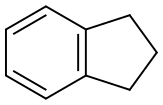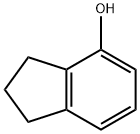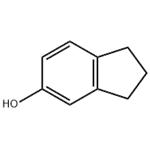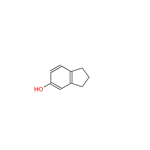Uses
5-Indanol is a 5-hydroxyindole analog with weak inhibitory activity against human melanoma tyrosinase. 5-Indanol is also used as a reagent in the preparation of Sodium Indanylcarbinicillin; a compound which has been shown to reduce blood pressure in mammals and also has been used as a β-lactam antibiotic.
Description
5-Indanol, mp 54–55 ℃, bp
255 ℃, is produced from indan [496-11-7] by
a sulfonation–alkali-fusion process. A
synthesis for 1,1,3,3-tetraalkylindanols was developed by Bayer, which involves
the reaction of isoolefins with secondary alkenylphenols (or compounds generating them
under the reaction conditions) at 100–250 ℃
and in the presence of acidic catalysts. An
example is the reaction of isobutene with bisphenol A in the presence of acid-activated
clays which yields 1,1,3,3-tetramethyl-5-indanol [53718-26-6], mp 115 ℃, bp (2.66 kPa)
156 ℃, in a yield of 80% of the theoretical,
and 4-tert-butylphenol as a coproduct.
Chemical Properties
light brown to grey-brown crystalline powder or
Uses
5-Indanol is a 5-hydroxyindole analog with weak inhibitory activity against human melanoma tyrosinase. 5-Indanol is also used as a reagent in the preparation of Sodium Indanylcarbinicillin (S635000); a compound which has been shown to reduce blood pressure in mammals and also has been used as a b-lactam antibiotic.
Definition
ChEBI: A member of the class of phenols that is indan which has been hydroxylated at position 5.
Purification Methods
Crystallise 5-hydroxyindane from pet ether (m 56o) or pentane (m 59-60o). It has UV with max at 283.5nm (cyclohexane). The 3,5-dinitrobenzoyl derivative has m 156o. [Beilstein 6 III 2428, 6 IV 3829.]






